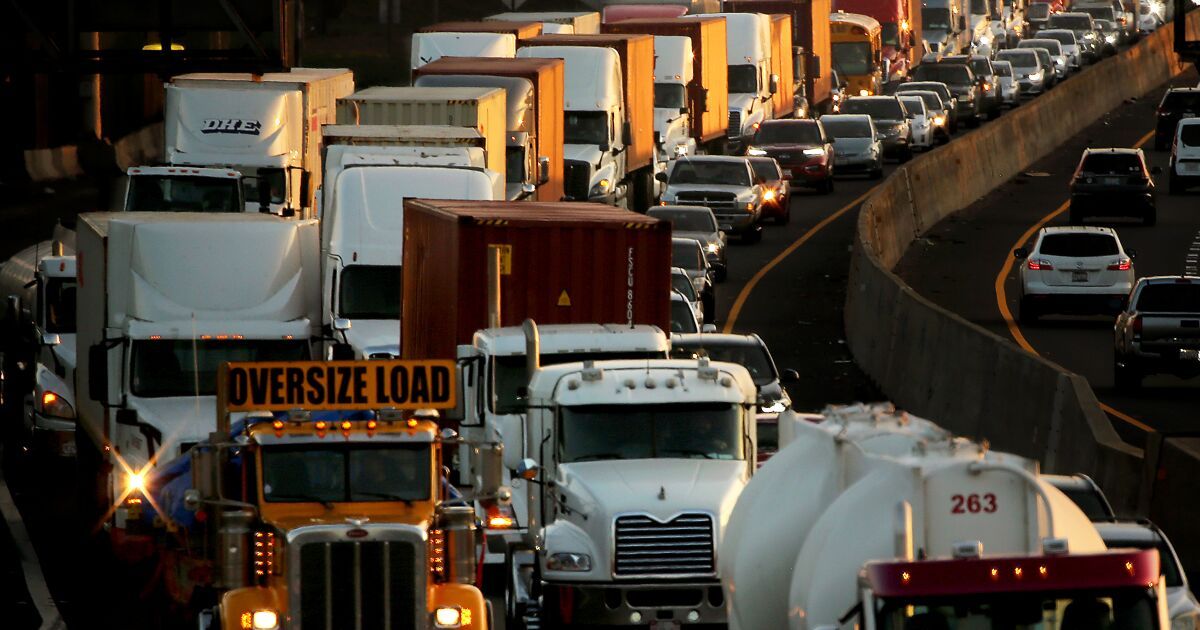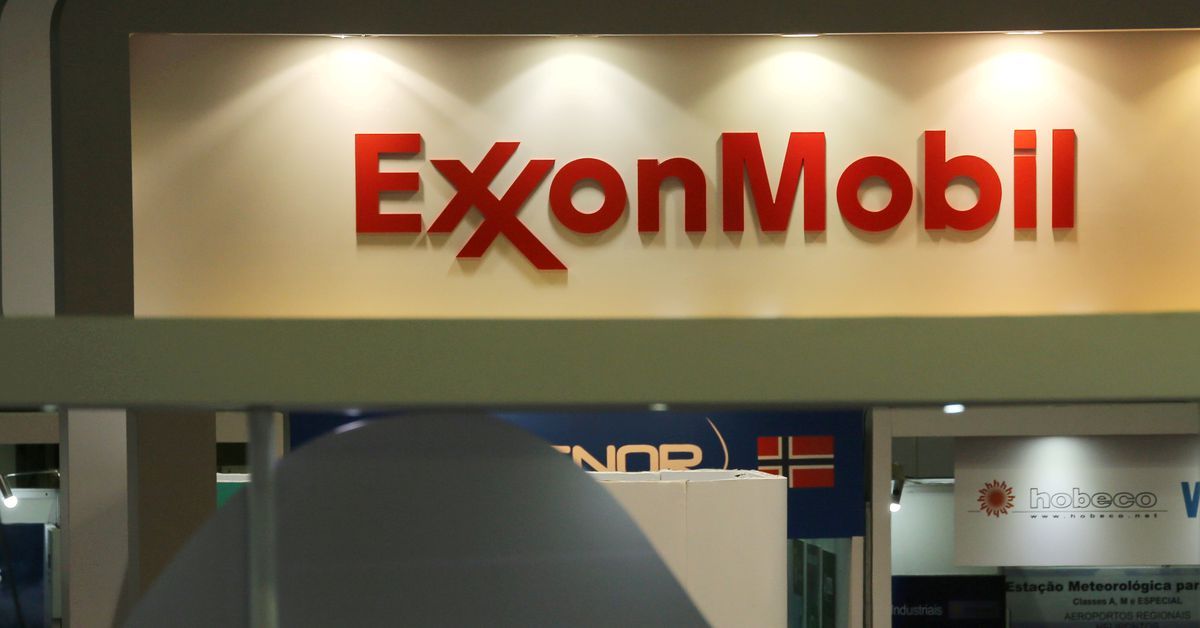California air regulators decide on zero-emission rules
California will accelerate the adoption of zero-emission medium- and heavy-duty vehicles in all public and many large private fleets.
California air regulators have adopted two landmark rules setting aggressive zero-emission requirements for fleets of heavier vehicles and locomotives, a move expected to drastically cut pollution near ports and rail yards and alter the way goods move through the American West.
In a marathon two-day hearing, perhaps the most consequential session of the year, the California Air Resources Board voted to set an age limit to retire old locomotives while establishing a regulatory framework that requires operators to set aside money to upgrade to cleaner engines and eventually zero-emission powertrains.
In a second vote Friday, the board enacted a rule that will accelerate the adoption of zero-emission medium- and heavy-duty vehicles in all public and many large private fleets — a regulation that will necessitate over 1 million new electric freight trucks, school buses and delivery vehicles over the next 25 years. Arguably the most notable provision will require all cargo trucks entering California seaports and rail yards to be zero-emission by 2035.
“This is an absolutely transformative rule to clean our air and mitigate climate change,” said Liane Randoph, chair of the state Air Resources Board. “And I’m so proud to be here with my colleagues to work on this and advance this forward. We all know there’s a lot of challenges, but those challenges aren’t going to be tackled unless we move forward.”
Advertisement
Taken together, the two rules are expected to bring tremendous relief to such communities as Long Beach and San Bernardino, which have been besieged by diesel exhaust and smog-forming emissions from heavy truck traffic and trains. The rules are estimated to prevent more than 5,000 premature deaths by 2050, decrease cancer risk near rail yards by 90% and bring nearly $60 billion in health benefits statewide.
The votes demonstrate how California, a titan of clean air policy, has become increasingly ambitious in its quest to curtail pollution from the transportation sector and eventually zero out the state’s carbon footprint. In the last year, alone, California has also banned the sale of new gasoline cars by 2035 and set requirements that an increasing percentage of annual truck sales be zero-emission vehicles.
In turn, California’s national influence has grown under a presidential administration that seems to welcome its pacesetting environmental agenda and a collection of states have chosen to adhere to these more stringent standards rather than to federal standards.
Due to historically poor air quality, California is the only state in the nation granted the right to set its own emission standards for motor vehicles, with federal government approval. Even still, the newly approved locomotive rule highlights California’s intention to test the limits of its state authority as emission standards for trains have largely been subject to federal regulation.
As the world’s fourth-largest economy, the state has often thrown around its economic weight to compel industries to comply with its stringent standards. But port authorities, business leaders and public utilities have expressed concern surrounding the feasibility of purchasing the necessary quantities of zero-emission vehicles and locomotives, in addition to installing the infrastructure, including electric charging stations for trucks.
The Air Resources Board argues 135 models of zero-emission trucks are being manufactured and delivered, and billions of dollars in incentives will be available for new vehicles and infrastructure.
Of an estimated 1.8 million medium- and heavy-duty vehicles operating daily in California, about 532,000 will be subject to the new fleet requirements.
This includes the roughly 30,000 cargo trucks, which overwhelmingly run on diesel and natural gas, visiting ports and rail yards in California. By the end of this year, all legacy gas and diesel-powered vehicles that intend to operate in ports and rail yards must register by the end of the year, if they want to operate by the end of their useful life, 18 years, 800,000 miles or at least 13 years if over 800,000 miles.
But this will be a herculean lift. At the ports of Los Angeles and Long Beach, collectively the largest port complex in the nation, more than 20,000 trucks have access to transport freight. Only 72 are “electric” or “battery electric.” One is a hydrogen fuel cell truck.
Enrique Rivas, who owns and operates a freight truck, told the board he was supportive of the new proposal, but said it puts many independent truckers in a bind. Rivas said he just bought a 2016 freight truck last year. Although Rivas wants to buy a new truck, he isn’t currently able to afford it by this year, meaning he will only be able to buy an electric or hydrogen vehicle next year.
“I’m in a truck all day I’m at the ports,” he said. “I know what it’s like to inhale diesel all day long. There’s a lot of us out here, owner-operators trying to live the American dream and own your own little business.”
“I hope you guys consider us — there’s a lot of us,” Rivas said. “Just remember that if trucks stop, you know, everything stops. ... I’m all for it. But I hope you guys can give us a little bit more time because it’s expensive to do all these things.”
Starting in 2036, per the fleets rule, manufacturers may sell only zero-emission medium- and heavy-duty vehicles in California. This builds on the Advanced Clean Trucks Rule that requires half of the trucks sold in California to be zero-emission by 2035.
The fleets rule also establishes rules for all publicly owned fleets and so-called high-priority fleets, owned by entities with 50 or more trucks or revenue over $50 million.
The federal and high-priority fleets would be required to only purchase medium and heavy vehicles that are zero-emission starting in 2024, and phase out other vehicles by the end of their useful life. If they don’t want to buy all zero-emission by next year, they have the option to scale up their percentage of zero-emission vehicles over the next two decades, culminating in all fleet vehicle categories by 2042.
California Warehouse boom transformed Inland Empire. Are jobs worth the environmental degradation? As toxic emissions from diesel traffic choke the air, activists are calling for a moratorium on new warehouses and for the governor to declare a state of emergency.
This will have huge implications for the 230,000 mail trucks in the U.S. Postal Service — the nation’s largest fleet. In December, the Postal Service announced it would purchase 106,000 new mail trucks, about 62% of which will be electric vehicles, a startling reversal from an earlier proposal to mostly order gas-powered vehicles achieving a dismal 8.2 miles per gallon.
It will also ensure high-priority fleets such as Amazon, UPS and FedEx follow through on their zero-emission pledges.
Between 2024 and 2026, 50% of all state and local government fleets need to be zero-emission, unless the municipal fleet is fewer than 10 vehicles. However, by 2027, all public vehicle purchases must be zero-emission.
Alternatively, state and municipal fleets can also meet the annual benchmarks with an increasing percentage of zero-emission vehicles.
In Los Angeles, this would guarantee the Metro bus system meets its pledge to have a zero-emission fleet by 2030. It would push Los Angeles Unified Schools District to transition five years ahead of schedule.
Source: Los Angeles Times


